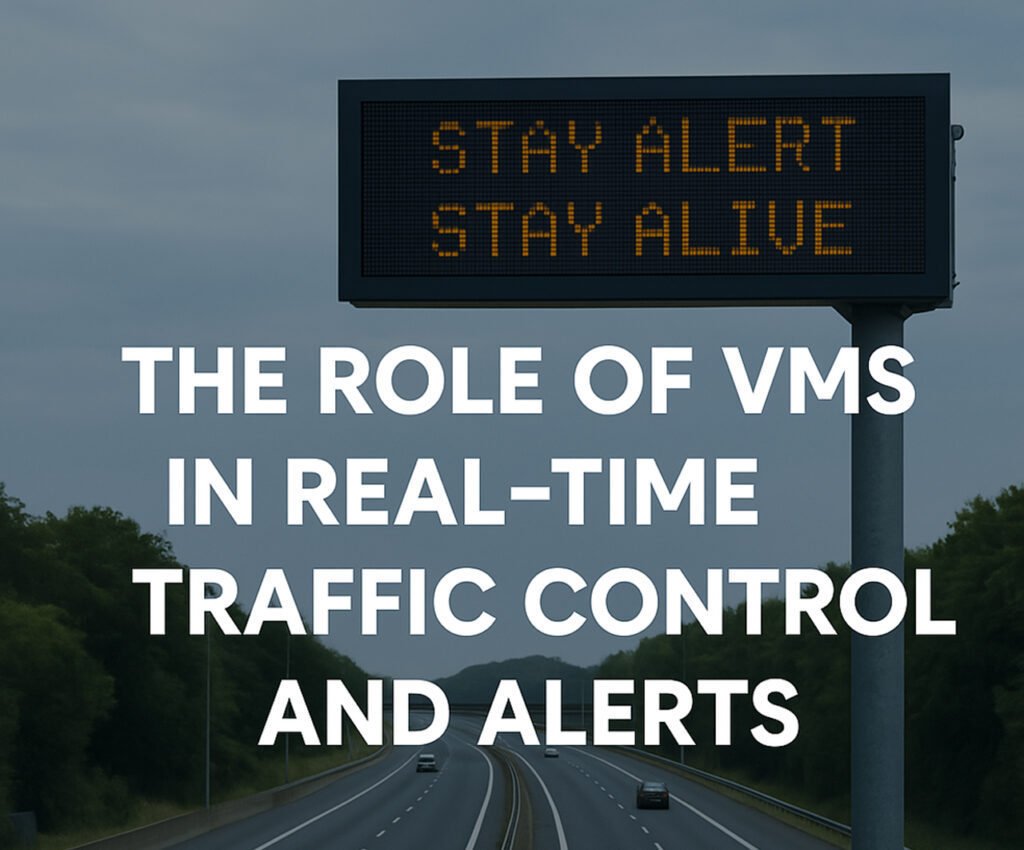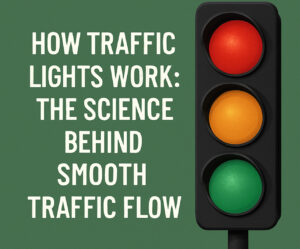In today’s fast-paced, unpredictable traffic environments, the need for immediate, clear communication is more critical than ever. That’s where VMS traffic signs, VMS road signs, and VMS traffic systems come in. These dynamic tools are transforming how cities manage congestion, respond to emergencies, and keep roads safer. With real-time updates and adaptable messaging, VMS (Variable Message Signs) play a vital role in the modern traffic control ecosystem. Know more..
What Are VMS Traffic Signs?
VMS traffic signs are electronic signs that display dynamic messages to drivers. Unlike static signage, VMS can be programmed to show different alerts based on current road conditions, events, or weather. From warning about lane closures to notifying of speed limits or hazards, VMS traffic systems are built to respond in real time.
These signs are often installed on highways, at major intersections, or in high-traffic urban areas. They’re typically LED-based, energy-efficient, and controlled remotely by traffic operation centers. The result is a flexible, powerful tool for delivering critical information to drivers when they need it most.
The Power of Real-Time Communication
What makes VMS road signs invaluable is their ability to communicate with drivers instantly. Imagine a crash on a busy freeway. Rather than relying on police officers or roadside personnel to manage traffic, control centers can immediately activate VMS traffic signs with alternate route instructions or hazard warnings.
This immediate feedback loop not only reduces driver confusion but also helps emergency responders reach the scene faster. The signs act as a digital voice for traffic managers, keeping roads organized even in the face of chaos.
Use Cases That Save Lives
VMS road signs are used in a range of scenarios that directly improve road safety:
- Accident Alerts: Notify drivers of collisions ahead to reduce pileups.
- Construction Zones: Warn about upcoming lane shifts or reduced speeds.
- Weather Warnings: Display alerts about fog, ice, flooding, or high winds.
- Special Events: Help redirect traffic during marathons, parades, or concerts.
- Emergency Evacuations: Guide residents out of danger zones in real time.
Each of these use cases demonstrates the critical role VMS traffic systems play in real-world conditions.
VMS and Smart Cities
As cities evolve into smarter ecosystems, VMS traffic signs are being integrated with other technologies like AI, cameras, and IoT sensors. This allows them to react not just to inputs from human operators but also to automated data flows.
For example, sensors can detect when traffic is backing up, triggering a VMS road sign to display a message suggesting alternate routes. Or weather data from connected systems can prompt alerts about icy roads, giving drivers more time to adjust their speed.
In a smart city, VMS traffic becomes a key part of a larger, interconnected network designed to make transportation more efficient, safe, and responsive.
Adaptability in Every Situation
One of the biggest advantages of VMS traffic signs is their adaptability. Operators can customize the messages to suit the specific needs of any scenario. Whether it’s adjusting speed limits based on congestion levels or guiding vehicles during emergencies, VMS road signs provide unparalleled flexibility.
Some advanced models even allow for multilingual messaging or graphics, making them especially useful in diverse urban areas or tourist-heavy regions.
Portable VMS: A Mobile Solution
While many VMS traffic systems are fixed installations, portable units are also becoming more common. These are often mounted on trailers and used in temporary situations such as roadwork, disaster recovery, or pop-up events.
Portable VMS road signs offer the same real-time capabilities as permanent ones, but with the added benefit of mobility. They’re essential tools for transportation departments and event organizers alike.
Improving Driver Compliance
Studies show that drivers are more likely to respond to VMS traffic signs than traditional signs, especially when the message is specific and timely. This improved compliance leads to fewer accidents and smoother traffic flow.
For example, a generic “Reduce Speed Ahead” sign might be ignored, but a VMS road sign that says “Crash 2 Miles Ahead – Merge Left” grabs attention and prompts immediate action.
Integration with Navigation Apps
Modern VMS traffic systems can also integrate with GPS and navigation apps. When a VMS road sign updates with a new alert, that information can be sent directly to Waze, Google Maps, or other platforms, enhancing communication beyond the physical road.
This multi-channel strategy ensures drivers receive the information no matter where their eyes are—on the road or their smartphone (hopefully before they start driving).
Energy Efficiency and Sustainability
Most VMS traffic signs use LED technology, which is not only bright and clear but also energy-efficient. Many are solar-powered, reducing the need for extensive wiring or grid connections.
This sustainability element aligns with broader environmental goals and helps reduce the long-term cost of operating traffic management systems.
Real-World Example: VMS in Action
Let’s take a real-world example. In Los Angeles, the Department of Transportation uses a network of over 200 VMS road signs across the city. During a recent wildfire evacuation, these signs played a critical role in directing traffic away from dangerous areas, guiding residents safely to shelters, and informing drivers about road closures.
Because VMS traffic systems could be updated instantly as fire paths changed, the response was fast, efficient, and ultimately, life-saving.
VMS in Emergency Preparedness
It’s not just during an emergency that VMS traffic signs matter—they’re essential in preparation, too. Governments can use VMS road signs to run awareness campaigns about evacuation drills, road safety, or upcoming construction. This builds public trust and keeps people informed.
In hurricane-prone areas, for instance, VMS traffic systems often serve as early-warning tools that get the message out long before disaster strikes.
Easy Maintenance and Remote Access
Today’s VMS traffic signs are designed for ease of use. They can be updated via cloud-based systems or mobile apps. Maintenance crews can troubleshoot or change messages without even being on-site.
Some systems also include diagnostics that alert technicians when something goes wrong, keeping downtime to a minimum and maximizing uptime for crucial alerts.
Final Thoughts: The Road Ahead
As urban traffic becomes more complex and unpredictable, the importance of VMS traffic signs, VMS road signs, and VMS traffic systems will only grow. Their ability to deliver targeted, real-time messages not only improves traffic flow but also saves lives.
Investing in VMS traffic technology isn’t just about convenience—it’s about safety, efficiency, and smart planning. With cities expanding and road networks evolving, VMS stands out as a critical piece of the modern transportation puzzle.
If the future is connected, then VMS traffic signs are already paving the way.





